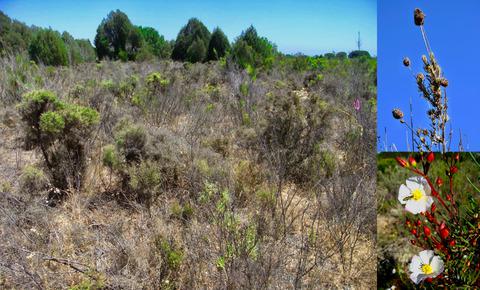Our official English website, www.x-mol.net, welcomes your
feedback! (Note: you will need to create a separate account there.)
Demographic traits improve predictions of spatiotemporal changes in community resilience to drought
Journal of Ecology ( IF 5.3 ) Pub Date : 2021-01-26 , DOI: 10.1111/1365-2745.13597 Maria Paniw 1, 2 , Enrique G. de la Riva 3 , Francisco Lloret 1, 4
中文翻译:

人口统计特征改善了社区抗旱能力时空变化的预测
更新日期:2021-02-09
Journal of Ecology ( IF 5.3 ) Pub Date : 2021-01-26 , DOI: 10.1111/1365-2745.13597 Maria Paniw 1, 2 , Enrique G. de la Riva 3 , Francisco Lloret 1, 4
Affiliation

|
- Communities are increasingly threatened by extreme weather events. The cumulative effects of such events are typically investigated by assessing community resilience, that is, the extent to which affected communities can achieve pre‐event states. However, a mechanistic understanding of the processes underlying resilience is frequently lacking and requires linking various measures of resilience to demographic responses within natural communities.
- Using 13 years of data from a shrub community that experienced a severe drought in 2005, we use generalized additive models to investigate temporal changes in three measures of resilience. We assess whether community‐weighted, species‐specific demographic traits such as longevity and reproductive output can predict changes in resilience and how the performance of these traits compares to more commonly used plant functional traits such as leaf area or root dry matter content.
- We find significant spatiotemporal variation in community dynamics after the drought. Overall, demographic traits are better at predicting absolute and relative resilience in total plant cover, but functional traits outperform demographic traits when resilience in community composition is assessed. All resilience measures show nonlinear and context‐specific responses to demographic and functional traits; and these responses depend strongly on the severity of initial drought impact.
- Synthesis. Our work demonstrates that a full picture of the mechanisms underlying community responses to drought requires the assessment of numerous species‐specific characteristics (including demographic and functional traits) and how these characteristics differentially affect complementary measures of community changes through time.
中文翻译:

人口统计特征改善了社区抗旱能力时空变化的预测
- 社区越来越受到极端天气事件的威胁。通常通过评估社区的应变能力来调查此类事件的累积影响,即评估受影响社区可以达到事件前状态的程度。但是,通常缺乏对适应力背后过程的机械理解,并且需要将各种适应力度量与自然社区内的人口响应联系起来。
- 使用来自2005年遭受严重干旱的灌木群落的13年数据,我们使用广义加性模型来研究三种复原力度量的时间变化。我们评估了社区加权的,特定物种的人口统计特征(例如寿命和生殖产量)是否可以预测复原力的变化,以及这些特征的表现如何与更常用的植物功能性特征(例如叶面积或根部干物质含量)进行比较。
- 我们发现干旱后社区动态显着的时空变化。总体而言,人口统计学特征更能预测植物总覆盖率的绝对和相对复原力,但在评估社区组成的复原力时,功能性状优于人口统计学特征。所有弹性指标都显示出针对人口和功能特征的非线性和因地制宜的反应;这些响应在很大程度上取决于最初干旱影响的严重性。
- 综合。我们的工作表明,要全面了解社区应对干旱的潜在机制,就需要评估许多物种特定的特征(包括人口统计和功能特征),以及这些特征如何随时间而不同地影响社区变化的补充措施。











































 京公网安备 11010802027423号
京公网安备 11010802027423号